Want to bring movement to your body while standing and working? One of the best ways to do so is to use a balance board.
With the rise of standing desks today, studies have shown that standing for long periods of time can be just as bad as standing and can lead to swelling and muscle fatigue in the lower limbs. A good balance board can help you counteract these negative effects by giving your legs regular movement and improving circulation.
In this article, we'll cover the different types of balance boards, which are best for the office, as well as their benefits and the awesome exercise routines you can perform on them while working out.
What are the main types of balance boards?
In order to maximise the benefits of a balance board, it is important to get the right one for your needs and environment. The following are the most common types of balance boards on the market today.
Rocker Balance Boards
Shapes: flat and rectangular
Base: Fixed semi-circular base
Difficulty: Easy
Of the various types of a balance board, the rocker is the easiest to use. Due to its semi-circular fixed base, it has a limited range of movement. Depending on how you place the board, it can only rock from front to back or from one side to the other.
Its ease of use makes the rocker balance board ideal for beginners, people with balance problems, the elderly and people undergoing physiotherapy. For commuters, it can improve their sedentary lifestyle without distracting them.
When it comes to this type of balance board, the ZHENSHENG Professional Rocker Board is a crowd favourite.
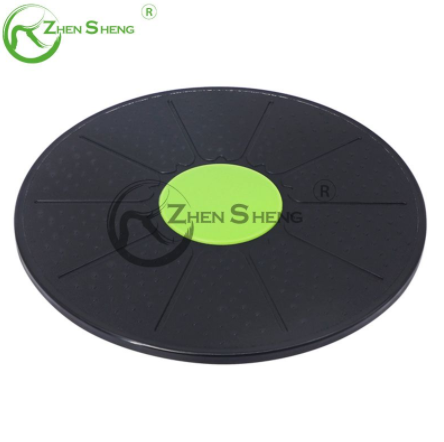
Wobble Balance Boards
Shapes: flat and round
Base: Fixed and dome-shaped
Difficulty: Medium
The centre of the wobble board has a bowl-shaped base which allows for 360 degrees of movement. The smaller the dome, the more difficult it is to maintain balance.
When using the wobble board, aim to stand on it and lean in any direction without letting the edges touch the ground.
For beginners, we recommend starting with a wobble board that has a large base. As you get better at maintaining stability, you can gradually transition to one with a smaller dome. Whether you can use it with a standing desk depends on how good your sense of balance is.
A wobble board is slightly more difficult to stand on than a wobble board but offers a greater range of movement and exercise possibilities.
The ZHENSHENG wooden rocker balance board is a popular example of this type of balance board.
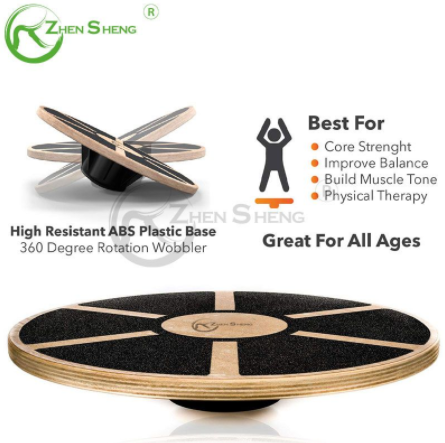
Roller Balance Boards
Shapes: flat and rectangular
Base: Rolling, cylindrical base
Difficulty: Challenging
Once you have mastered the rocker and rocker balance boards, you can use the roller boards to improve your game. Also known as a rocker board, this is a flat rectangular board placed on a cylindrical rolling base. As a result, you gain two levels of instability through the rotational movement and the left and right tilt movements.
Its design makes it very difficult to use at first and requires your full attention. As this distracts you, it can affect your productivity if used in the office.
As the movements required to use the roller board are similar to those used in surfing, water skiing, snowboarding or wakeboarding, it is often used by sports professionals to train, especially in the off-season.
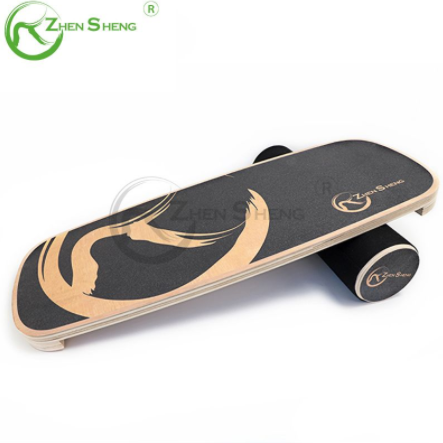
Half Balance Balls
Shape: Inflatable hemisphere with a flat base
Base: Spherical, removable
Difficulty: medium to challenging
Finally, there are the Half Balance Balls, a popular accessory in many gyms. At home, you can choose to stand on a spherical or flat surface while you work, making the most of your core and lower body.
The disadvantage of the half balance balls compared to the other options mentioned above is their larger size and weight. This makes them an unsightly option for office use. In addition, due to the height of these balls - which usually rise to around 10 inches - a standing desk must be used in order to use them at work.
If you can overcome these obstacles, semi-balanced balls may offer the widest range of exercise possibilities. Many of them come with resistance bands that allow you to work your arms and torso. One of my favourite stationary exercises to do on a semi-balanced ball is the deep squat.
If you decide to give it a try, the ZHENSHENG Half Balance Ball is an excellent choice.
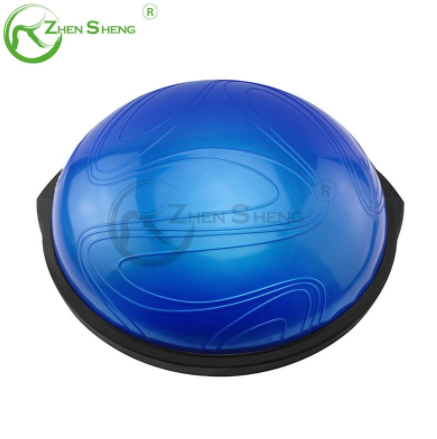
Benefits of Balance Boards
Balance boards can do wonders for improving your balance skills, but other intangible benefits include great core strength, relief from muscle pain, amazing calves and getting a complete body workout. You don't have to subscribe to a gym or watch fitness videos as these boards can make up for all the missed workout sessions. You can use them on their own or as a challenging complement to other moves, making them versatile and worth investigating.
Complementing your standing desk with a quality balance board has been proven to have many beneficial health effects.
Using a balance board is considered a low-impact weight-bearing exercise. This type of exercise can increase bone mass, prevent osteoporosis and improve everyday functional movements such as bending, stretching and turning.
A 2017 study found that balance training can improve memory and spatial cognition. This makes using a balance board a great option for people who are unable to do aerobic training due to work, health or time constraints. Aerobic training is a type of exercise that has been shown to improve cognitive performance.
Being sedentary at work can lead to muscle deterioration. By using a balance board you can exercise the pelvic region of the lower back. This stabilises the muscles and strengthens the core muscles, so your body can bear its own weight while moving. In addition to the core muscles, it also works the back, shoulder, hip and leg muscles.
The Balance Board takes the standing part of your sit-to-stand work regime to a whole new level. As well as making it more fun, adding the micro-movements needed to stay upright allows you to do mini-workouts throughout the day. This means that when the weekend comes around, your body won't be shocked by a sudden high-intensity workout when you're trying to catch up on your weekly workouts.
The benefit of using low-impact activities such as balance boards is that they are suitable for people of all ages and fitness levels.
According to a 2018 study, using a balance board at work increases energy expenditure and oxygen compared to sitting and standing. Heart rate also increases with standing and balance board use. Fatigue from standing increased over time, while fatigue from sitting and the balance board levelled off after 30 minutes. Productivity is the same for all three working conditions.
Complementing your standing desk with a balance board can increase your movement without affecting your productivity.
By keeping you moving and increasing your alertness with a balance board, you can prevent drowsiness in the office.
Balance board training improves spatial awareness, coordination, language development, and concentration and strengthens the ankle joint to prevent injury.
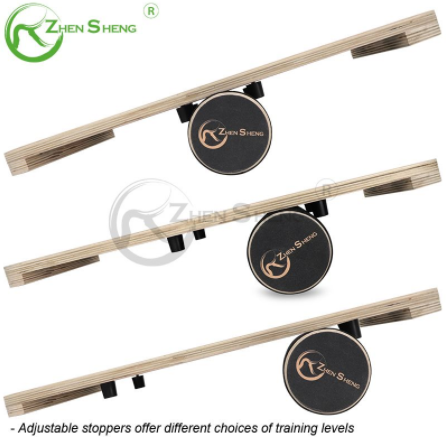
Balance Board Buying Guide
While a good balance board can do wonders for your body, the wrong purchase can have serious consequences. You don't want to get injured while working out on a balance board because it can cause a lot of damage. That's why it's important to look for the various features of these products so you don't end up with the wrong equipment. Here, we have listed the most important factors that will further help you make an informed decision.
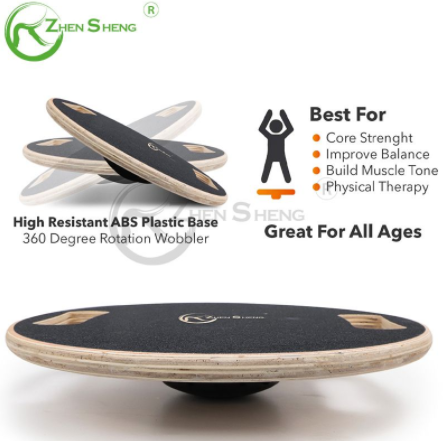
What should I consider when buying a balance board?
Type
You can find various types of balance boards on the market. The most common are rocker, rocker boards, rocker rollers, ball rings and springboards.
Rocker balance boards are simple boards made of wood or plastic with fixed pivot pivots attached. This type of board has only one sequence of movement, i.e. tilting from left to right. These boards are ideal for beginners who want to improve their balance. You can also use them for physical education for children or as fitness equipment.
Wobble boards, as the name suggests, have a circular board with a rocking pivot point at the bottom. They are ideal for free gymnastics, improving balance and other physical activities. These boards can be tilted in all directions and will challenge your balance skills. They function like wobbly toys and can be used to recover posture after a fall in any direction.
Rocker roller boards are an upgraded version of rocker boards and are very difficult to use. They consist of a flat board and a cylindrical roller - you place the board on top of the roller and rock it from side to side. You have to balance on the roller a lot and make sure you don't fall off, but some boards have roller stoppers to prevent the board from sliding off the roller completely. They are more like skateboards and are perfect for fitness freaks.
A ball and ring board is a combination of a rocker and a wobble board. It consists of a flat board with a small raised ring at the bottom. The board is then placed on an inflatable ball that can be moved within the confines of the ring. These boards are extremely challenging to use as they require a high level of balance and concentration. If you have good balance then this is the board for you.
The spring balance board has a spring at the bottom as a pivot point. Due to the compression of the spring loading it is difficult to balance the board and keep it stable. These boards will constantly bounce during any type of movement and care needs to be taken when using them.
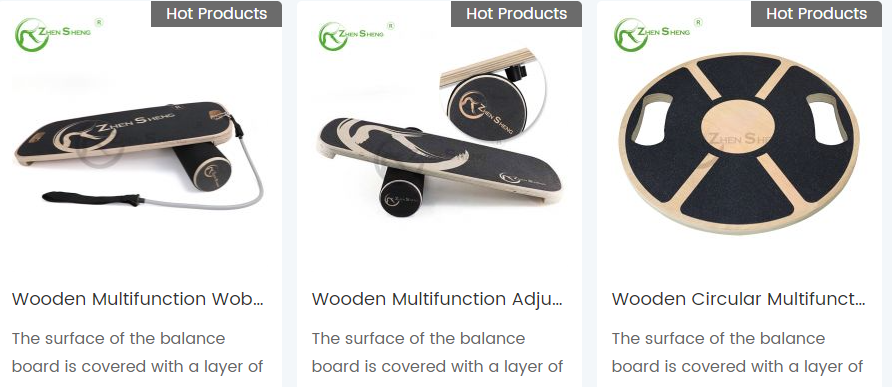
Materials
When buying a balance board, always check the type of material used in its construction. Most manufacturers use boards designed with wood suitable for adults and children. These boards are durable and can handle heavy loads with ease. However, if you are buying a board for your child then a plastic board will do. They are light in weight and work properly.
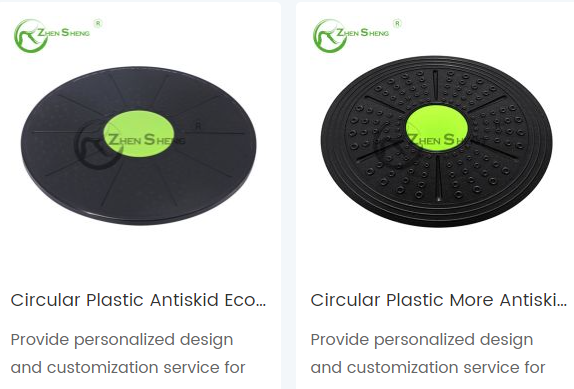
Tight grip
A balance board with a proper grip will help you maintain a stable position throughout your workout. Most boards have rubber grips, designed in various patterns to increase friction on the surface. As a result, your feet will still be glued to the board as you try to balance on it. However, some boards come with a single layer of ABS which can be used as grips. These boards are difficult to use because of the moderate level of friction on the surface and the risk of twisting your ankles or slipping off the board due to imbalance. They are designed for people with incredible core strength. In addition to this, there are boards with sandpaper layering that can be used as grips. Although the sandpaper will increase friction, it will wear out after frequent use.
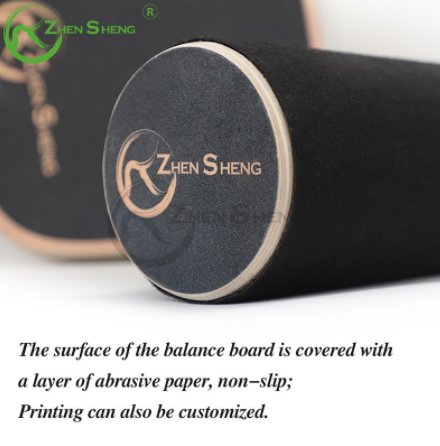
Size
The size of a balance board depends on three factors: height, weight and difficulty level. Generally there are four sizes available, XS, S, M and L. But how do you know which size is best for you?
Measure your height before you buy. If you are under 4 feet tall, then the XS board will be perfect for you. However, if you are between 4 and 5.5 feet tall, then a small board would be a good choice. Similarly, for people in the 5.5 to 6 feet height range, a medium-sized board will work, while for people over 6 feet, a large board is recommended.
The weight of the person is also important when choosing a balance board. If you weigh less than 200lbs then you can choose a beginner or industrial grade balance board. For people weighing over 200lbs, an industrial board is perfect.
If you are not an active member of the gym or are just starting out, then a beginner-level board will suit you. However, those who love fitness and work out every day should choose a professional balance board.
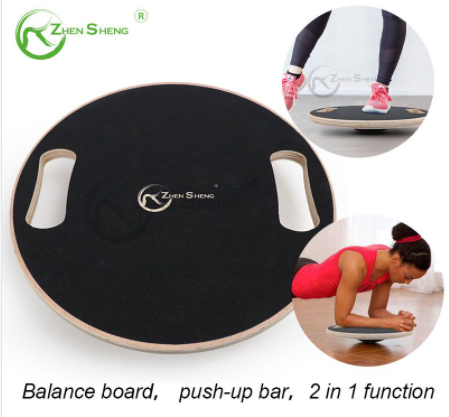
Cost
Balance boards usually cost between $30 and $150. However, some boards have a price tag of over $150. The price of a balance board depends on the brand, construction, type, durability and other factors. However, with good research, you can get a very good balance board at an affordable price. Make sure you establish a budget to avoid any unnecessary expenditure.
Final words
Balance boards are one of the most popular pieces of fitness equipment for fitness experts and beginners alike. By balancing correctly on the board, you are doing more workouts than you think. The only effort you need to put in is to keep your balance on the board. We hope that the products we have reviewed will help you find the perfect balance board for your workout routine.

Comments
Post a Comment